Image: Sub-adult NZ falcon by Shellie Evans
Size Does Matter (Sexual Dimorphism)
Sexual Dimorphism is the condition where the two sexes of the same species exhibit different characteristics that may include size, weight, colour, and markings.
With the NZ falcon it is with size, males are approximately a third smaller than the females, this is called reverse sexual dimorphism and occurs in almost all species of raptors.
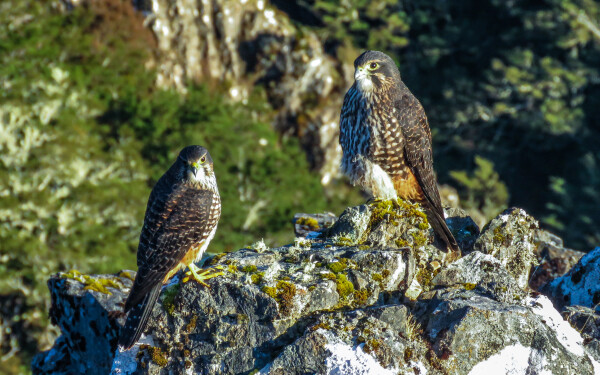
Image: Male and female NZ falcon by Nik Maxwell
Breeding and Nesting
NZ falcon have a long breeding season, from August to March. The first signs of breeding is when the pairs establish/re-establish their bonds with flying displays, calling and the male providing food via an aerial food pass.
Nests are generally just a scrape on the ground, or where available in the epiphytes of emergent trees in native forest.
Two to four eggs may be laid at 24-hour intervals, with three eggs being the most common. Males spend little time at the nest once the eggs are laid, as the female falcon does most of the incubation of the eggs, whilst the male hunts and provides prey.
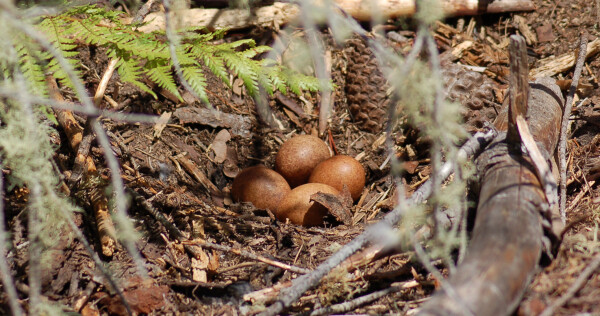
Image: NZ falcon nest/scrape by Suzi Phillips
Image: NZ falcon nest by Richmond Atkinson
Nest Defence
The NZ falcon will take on all comers with its nest defence, particularly if nest/scrap is on the ground. Repeatedly dive-bombing, if attacked by one or two NZ falcon retreat back until it stops and choose an alternative route. If unable to do this move through as quickly as safely possible, do not attempt to strike back at the falcon/s.
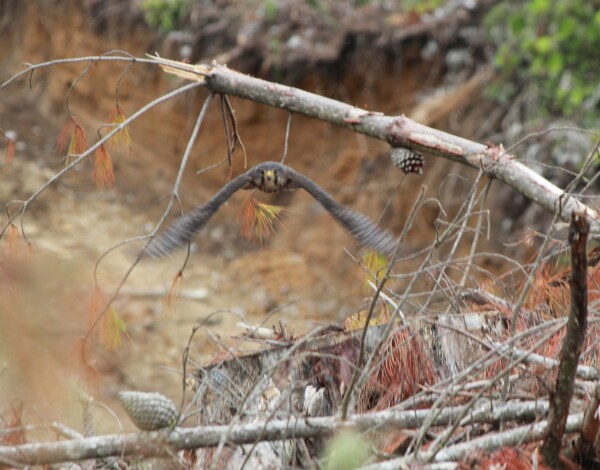
Image: Adult NZ falcon on attack by Sally Strange
Adult vs Juvenile
When the young falcon fledge, can fly (after 60-65 days since egg laid) and leave the nest, they are fully grown. They are easily recognised as they differ from the adults. The juvenile falcon is very ‘dark’ in plumage with a solid brown back and wings without the speckled white of the adult. Also the cere (where the beak joins the head) the eye surrounds and the feet are grey/blue not yellow like the adult.
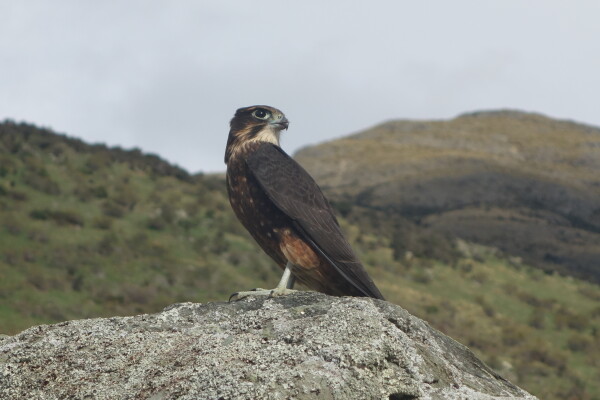
Image: Juvenile NZ falcon by Stephen Martin
Image: Adult NZ falcon by Justin Tunnage
Prey
The NZ falcon much prefers to catch its own live prey but is known to eat carrion though not common. Most popular prey are birds, and they feed on most species including both native and exotic, known to catch items up to six times their own size.
The NZ falcon also preys on mammals, including rabbits, rats and mice and have even been seen to prey on ferrets and stoats. Lizards and insects are also included in the NZ falcon’s diet as are the fruits of native plant species.
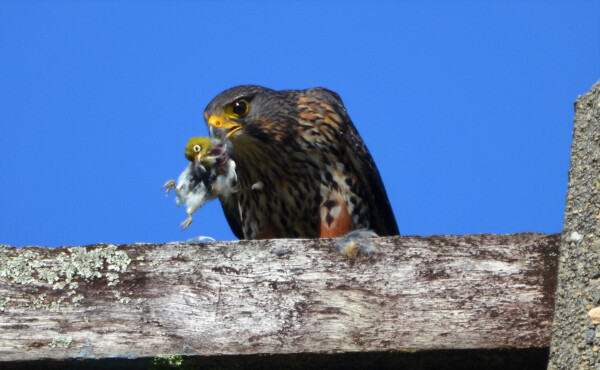
Image: Adult NZ falcon with Silvereye by Kirsty Williams